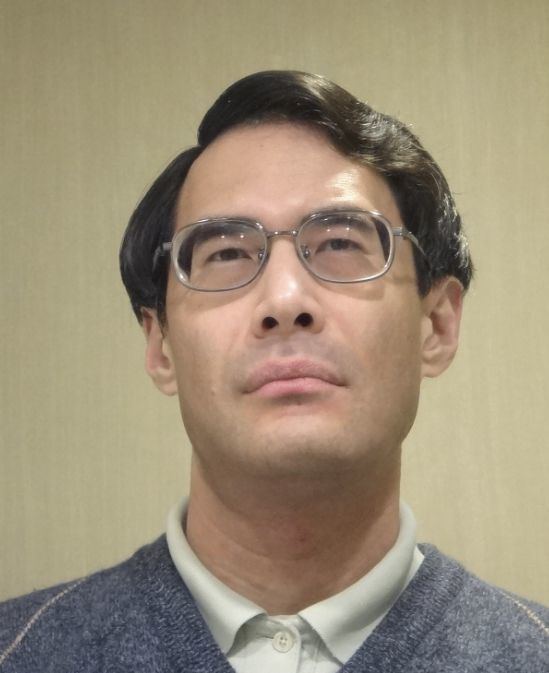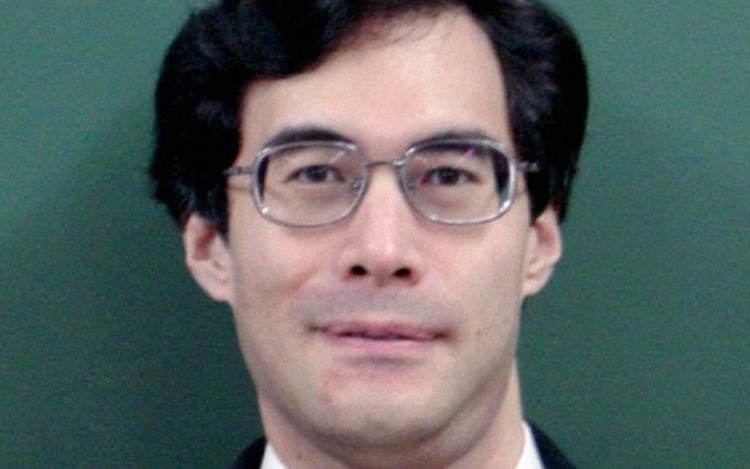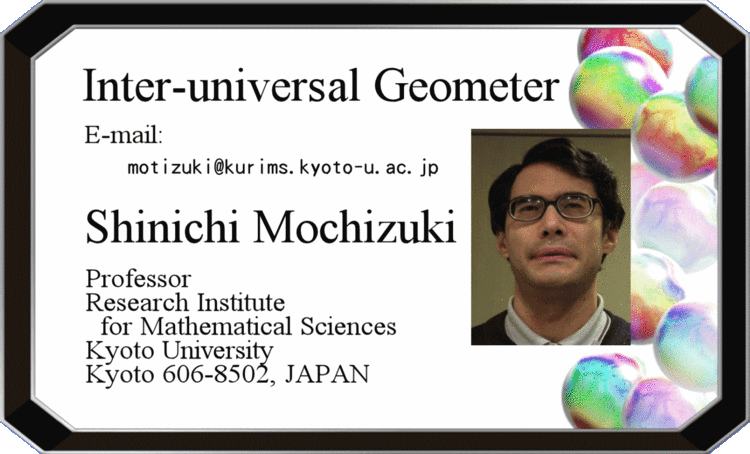Role Author | Name Shinichi Mochizuki | |
 | ||
Notable awards JSPS Prize, Japan Academy Medal Similar People Gerd Faltings, David Masser, Alexander Grothendieck, Grigori Perelman, Ted Nelson | ||
Len faki wide open shinichi mochizuki papers hq
Shinichi Mochizuki (望月 新一, Mochizuki Shin'ichi, born March 29, 1969) is a Japanese mathematician working in number theory and geometry. He is the leader of and the main contributor to one of major parts of modern number theory: anabelian geometry. His contributions include his famous solution of the Grothendieck conjecture in anabelian geometry about hyperbolic curves over number fields. He initiated and developed several other fundamental developments: absolute anabelian geometry, mono-anabelian geometry, and combinatorial anabelian geometry. Among other theories, Mochizuki introduced and developed Hodge–Arakelov theory, p-adic Teichmüller theory, the theory of frobenioids, and the etale theta-function theory.
Contents
- Len faki wide open shinichi mochizuki papers hq
- Car Free Day in Strasbourg France
- Early life
- Career
- An elementary general introduction
- A less elementary general introduction
- Studying IUT
- Publications
- Inter universal Teichmller theory
- References

Shinichi Mochizuki is the author of the inter-universal Teichmüller theory (IUT), also referred to as the arithmetic deformation theory or Mochizuki theory. Due to its breakthrough nature in the sense of how much it differs from previous theories used in Diophantine geometry, this theory has attracted the highest level of attention. Briefly, IUT supplies a new conceptual view on numbers, by using noncommutative groups of symmetries such as the full absolute Galois groups and arithmetic fundamental groups. Applications of IUT lead to solutions of several celebrated problems in number theory such as the strong Szpiro conjecture, the Vojta conjecture for hyperbolic curves, a version of the abc conjecture and its generalization over arbitrary number fields.

Car Free Day in Strasbourg, France
Early life

Shinichi Mochizuki was born to parents Kiichi and Anne Mochizuki. When he was five years old, Shinichi Mochizuki and his family left Japan to live in the USA. Mochizuki attended Phillips Exeter Academy and graduated in 1985. He entered Princeton University as an undergraduate at age 16 and graduated salutatorian in 1988. He then received a Ph.D. under the supervision of Gerd Faltings at age 23. He joined the Research Institute for Mathematical Sciences in Kyoto University in 1992 and was promoted to professor in 2002.
Career

Mochizuki proved Grothendieck conjecture on anabelian geometry in 1996. Mochizuki was an invited speaker at the International Congress of Mathematicians in 1998. In 2000-2008 he discovered several new theories including the theory of frobenioids, mono-anabelian geometry and the etale theta-function theory for line bundles over tempered covers of the Tate curve.
On August 30, 2012 Shinichi Mochizuki released four preprints, whose total size is about 500 pages, which develop inter-universal Teichmüller theory and apply it to prove several cherished problems in number theory These include the strong Szpiro conjecture, the hyperbolic Vojta conjecture and the abc conjecture over every number field. Due to its groundbreaking nature for modern mathematics and due to the failure of many mathematicians to study this theory properly, IUT has attracted most substantial attention from mass media.
An elementary general introduction
One can perform two standard operations with numbers: add and multiply. Prime numbers are “atoms” with respect to multiplication: all positive non-zero numbers are products of them. Various famous problems in mathematics ask very difficult questions about relations between prime numbers and the second operation of addition. These problems include the abc conjecture which in concentrated form expresses certain generic fundamental features of problems of the so called Diophantine geometry.
IUT introduces and works with deformations of multiplication, by deconstructing and reconstructing arithmetic objects. Deconstruction allows to “forget” the addition, just keeping multiplication. One keeps certain information about symmetries of the objects, these symmetries form a group (the absolute Galois group and the arithmetic fundamental group). IUT addresses such fundamental aspects in mathematics as to which extent the multiplication and addition on numbers cannot be separated from one another. IUT studies deformations of multiplication. It measures the results of such deformations and produces bounds of how much the original object can be deformed. The gist is that it cannot be deformed too much. This leads to solutions of several famous problems including the abc conjecture. IUT uses various reconstruction algorithms of anabelian geometry.
Class field theory was the top achievement of algebraic number theory in the 20th century. Anabelian geometry, together with higher class field theory and Langlands program are three significant generalizations of class field theory.
A less elementary general introduction
In the specific situation of a number field and an elliptic curve with semi-stable reduction over it, IUT deals with various hyperbolic curves associated to the elliptic curve, over the number field and its completions, and with the full Galois and fundamental groups of associated objects, as well as with related enhanced categorical structures called Hodge theaters. Very generally speaking, IUT studies deformations of multiplication on arithmetic structures and how much multiplication can be separated from addition. These deformations are part of certain links, called theta-links. The theta-links and other log-links that use logarithm are non-scheme theoretical. These links are not compatible with the ring or scheme structure, but Galois groups are compatible with these links. From the Galois groups which passed through a link one reconstructs schemes using profound algorithmic results of mono-anabelian geometry, developed earlier by Mochizuki. The study of mild indeterminacies introduced for multiradiality purposes leads to applications to the strong Szpiro conjecture and its equivalent forms. The IUT theory involves a relatively large number of other new concepts. The theory is quite complex, and some of its complexity may be related to the absence of appropriate language to describe it.
Studying IUT
Shinichi Mochizuki documented the relevant progress of the study of the theory by other mathematicians, as well as minor changes in his preprints, in the first two years since 2012, in his two reports December 2013 December 2014. The study of the theory has proved very challenging for contemporary mathematicians. To assist mathematicians, surveys of IUT were produced by its author, by Ivan Fesenko, and by Yuichiro Hoshi (currently available in Japanese only).
National workshops on IUT were held at RIMS in March 2015 and in Beijing in July 2015. International workshops on IUT were held in Oxford in December 2015 and at RIMS in July 2016. The international workshops attracted more than 100 participants. Proceeding of the Oxford workshop are available from its page and proceeding of the RIMS workshop are in preparation.
Files of the RIMS workshop include a document which mentions, "As of July 2016, the four papers on IUT have been thoroughly studied and verified in their entirety by at least four mathematicians (other than the author), and various substantial portions of these papers have been thoroughly studied by quite a number of mathematicians (such as the speakers at the Oxford workshop in December 2015 and the RIMS workshop in July 2016). These papers are currently being refereed, and, although they have not yet been officially accepted for publication, the refereeing process is proceeding in an orderly, constructive, and positive manner."
